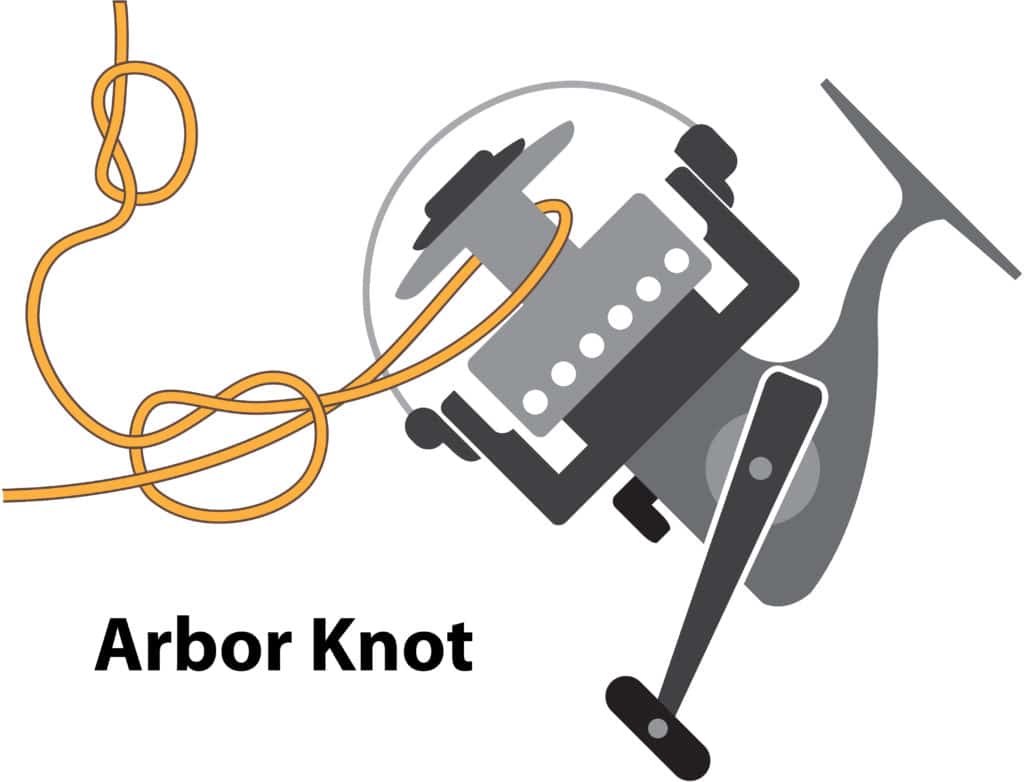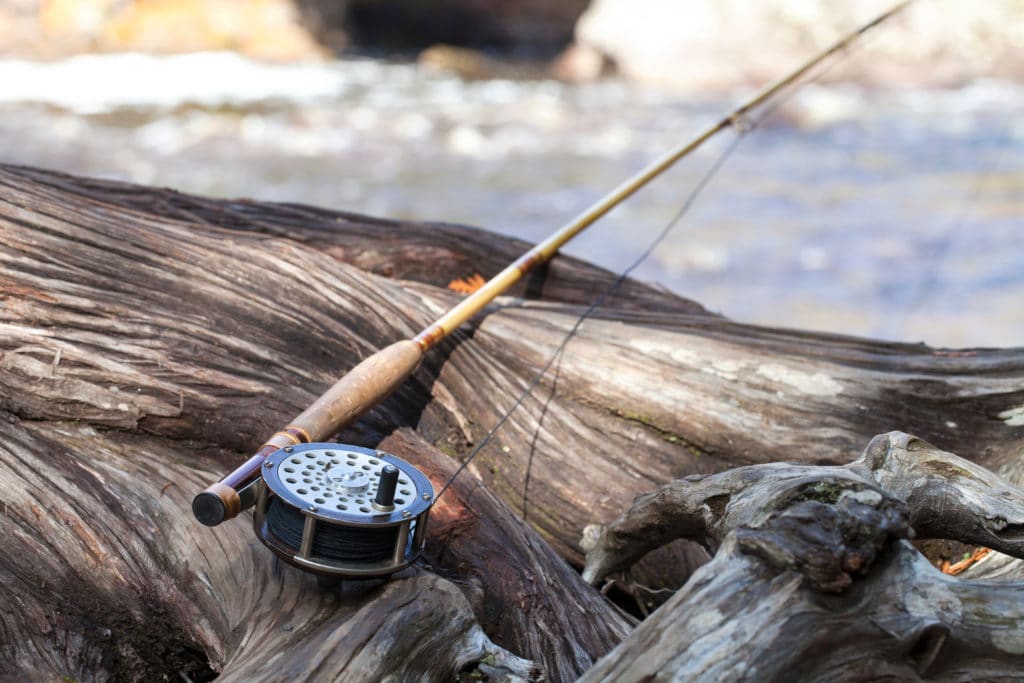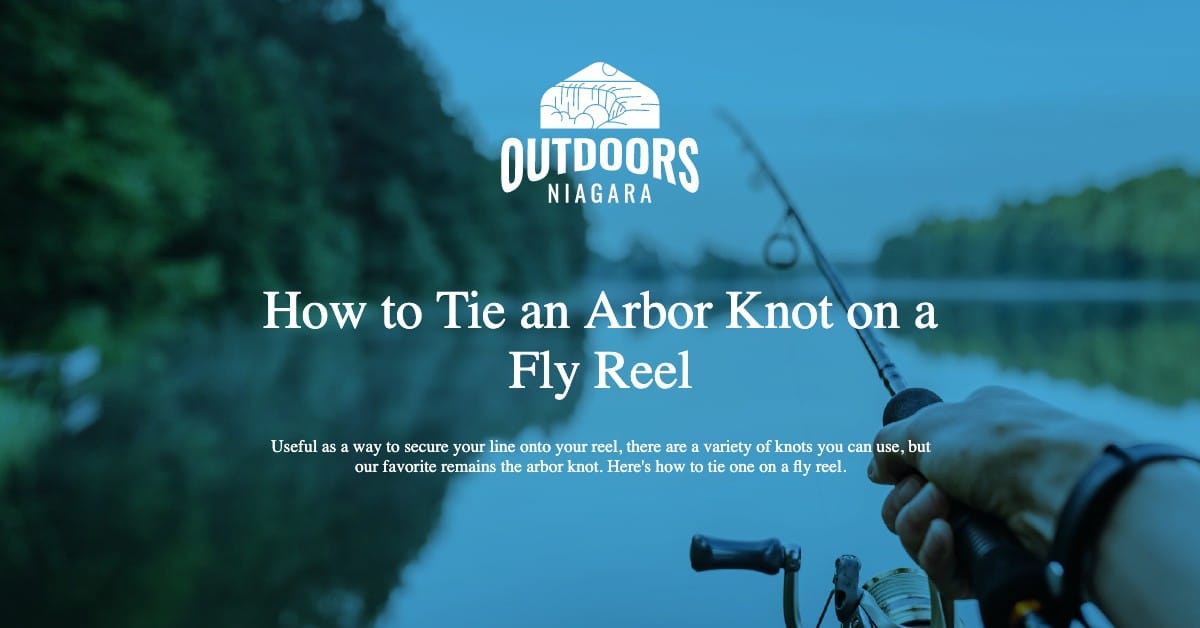Fishing is one of the most relaxing pastimes you could ever participate in.
Whether you enjoy fishing at a lake or dam or prefer the thrill of deep water or ocean fishing, there are many tips and tricks that you can use to improve your fishing experience.
One of the best tricks to learn is the art of tying knots. Useful as a way to secure your line onto your reel, there are a variety of knots you can use, but our favorite remains the arbor knot.

Contents
What is an Arbor Knot?
An Arbor knot is quite possibly one of the most versatile knots that can be used to secure your line to your reel.
It is called an arbor knot as it is tied to the arbor of a reel.
While many anglers use a blood knot, nail knot, or square knot, nothing compares to the arbor knot.
It can be used on the following lines and reels:
Lines
- Monofilament line
- Fluorocarbon line
- Braided line
- Fly fishing line
Reels
- Spinning reels
- Baitcasting reels
- Fly reels
Made up of two knots that essentially pull together when done correctly, the arbor knot is the best knot to secure your line to your reel.
The purpose of the arbor knot is not to prevent your line from snapping but rather to use the line to pull your rod up should it fall into the water or be pulled by a strong catch.

How to Tie an Arbor Knot
As we have mentioned, the arbor knot is one of the most versatile knots and can be used on all types of lines and reels.
For this article, we will focus on lining a fly fishing line to a fly fishing reel using an arbor knot.
Here’s how it is done:
Step #1
Wrap your fly fishing line around the arbor of your reel spool. It should loop around the spool completely.
Step #2
Using an overhand knot, tie a knot around the longer part of your line. You will be left with a knot, the tag end of the line, and the extra line that will be spooled onto your reel spool.
Step #3
Tie a second overhand knot a couple of inches away from the other knot. This should be closer to the tag end of the line and not the section closest to the casting reel.
Step #4
Pull the longer section of the line. You will notice that this pulls the two overhand knots together. The first knot will slide down to the reel while the second knot slides against the first. This causes a secure knot that should feel taut when pulled.
Step #5
Trim the tag of the line and continue spooling your reel.
The next steps would include lining your rod and baiting your hook. You can use an arbor knot for this, too, as it guarantees a secure fix of your hook to the line.
Types of Knots
There are countless types of knots that you can use to re-line your reel.
From standard knots to specialty knots, the most popular knot remains an arbor knot.
These include:
- Blood knot
- Square knot
- Stopper knot
- Nail knot
- Wind knots
- Slip loop knot
- Animated knot
- Reef knot
While these are also considered effective knots, they cannot be used on all types of lines and reels.
The arbor knot remains the most versatile knot of all and is the only knot that can be used on all lines and on any type of fishing reel.
Types of Fishing and the Arbor Knot
The arbor knot is hands down the easiest knot to learn to tie.
It can be used when fishing in a lake or dam or even in more rapid waters like deep water or ocean fishing.
This knot can withstand the pressure of the water, as well as winds.
Let’s take a look at the types of fishing that can be done using an arbor knot:
Bait Fishing
Bait fishing is fun and one of the most common and practical methods of fishing that absolutely anyone can do.
It is generally done in calmer waters, such as rivers, lakes, dams, and still bodies of water.
While you do not need to use a very strong line for bait fishing, an arbor knot is recommended in the case of a heavier catch or your hook snagging on a rock.
Fly-fishing
If you have ever been fly-fishing or even watched a video of someone fly-fishing, you will know that it is considered a quiet sport.
“Flies” are created from feathers and other soft materials to ensure that the fish are not startled when the fly hits the water.
Fly-fishing is done in calm waters like streams, smaller rivers, and even brooks. You can use an arbor knot to secure your fly-fishing line to your reel.
Bait-casting or spinning
These two types of fishing are very similar, with the only difference being the type of rod used.
Bait-casting or spinning use heavier lines and are great for deep water or ocean fishing.
Depending on the types of reels, an arbor knot is a great knot to use to secure your line to your reel.
Trolling
Trolling is a type of fishing that is done off the back of a boat on a river, lake, or dam.
You would need to use a strong line like a braided line for trolling and can use an arbor knot to secure that braided line to your reel safely and securely.
Conclusion
The arbor knot is possibly one of the most versatile knots that can be used in fishing.
Forget about stopper knots, basic knots, or wind knots.
By following the steps on how to tie an arbor knot that we have laid out above, you too can learn the art of tying an arbor knot and securing your line to your reel.
An arbor knot is one of our favorite knots and can be used on any type of line and any type of reel.
It is fantastic for use in all types of fishing.
If you are still unsure how to tie an arbor knot, there are online videos (search arbor knot video) that can help you master the art of arbor knot tying.
Alternatively, you could speak to anyone at your local fishing supply store for more information and assistance.







